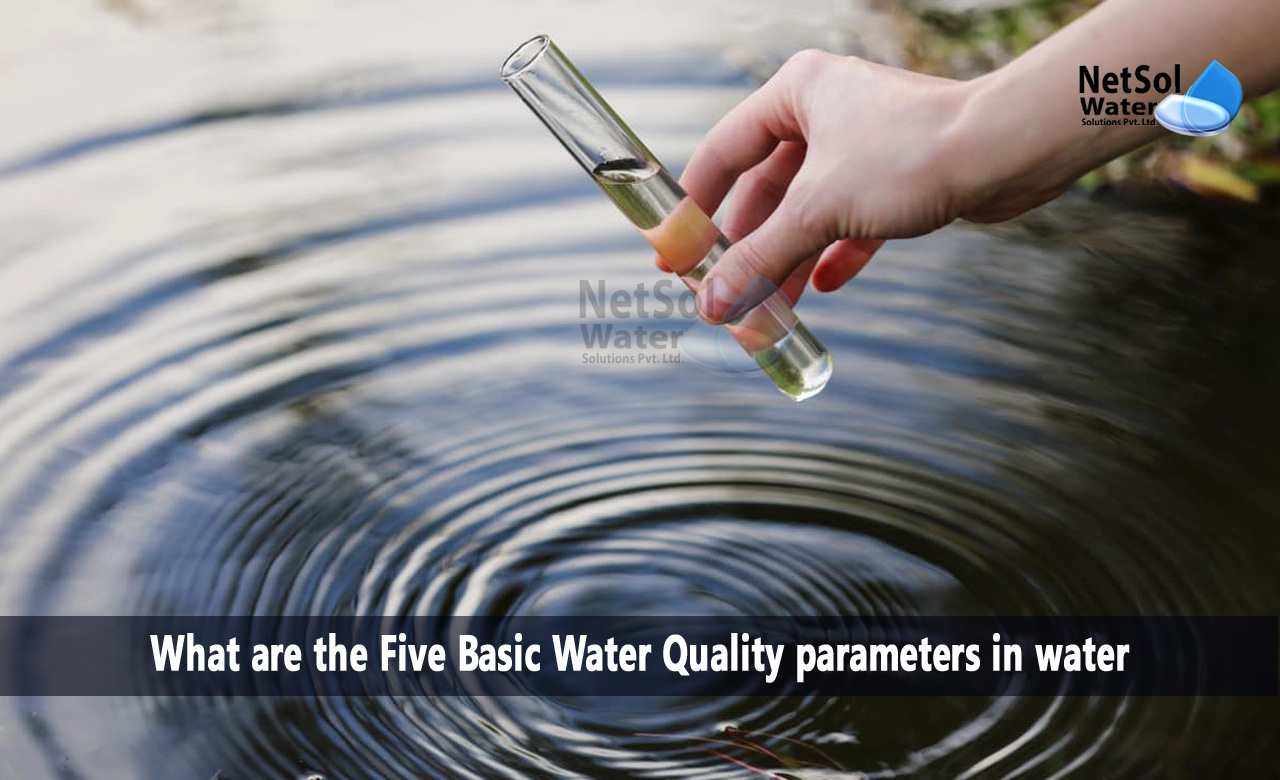What are the Five Basic Water Quality parameters in water?
Water is an essential resource for all living beings, and its quality plays a vital role in maintaining good health. The quality of water depends on various parameters, which are measured to assess its suitability for various purposes, such as drinking, irrigation, and industrial use.
Now we will discuss the five basic water quality parameters, their permissible limits, and their impact on human health.
Parameters:
The parameters are as follows:
1. pH
pH is a measure of the acidity or basicity of water, and it ranges from 0 to 14. The pH of pure water is 7, which is neutral. If the pH is below 7, the water is acidic, and if it is above 7, the water is basic.
The permissible limit of pH in drinking water is 6.5 to 8.5. Water with a pH value outside this range can be corrosive or may cause scaling, leading to the deterioration of the water distribution system. Additionally, low pH can cause stomach discomfort, and high pH can cause skin irritation.
2. Turbidity
Turbidity is a measure of the cloudiness or haziness of water caused by the presence of suspended solids, such as clay, silt, and organic matter. High turbidity reduces the transparency of water, making it unsuitable for consumption.
The permissible limit of turbidity in drinking water is 5 NTU (Nephelometric Turbidity Unit) or less. Water with high turbidity can cause gastrointestinal illnesses and bacterial infections.
3. Nitrogen
Nitrogen is a nutrient that occurs naturally in water and is essential for plant growth. However, excessive nitrogen in water can lead to eutrophication, which is the process of excessive plant and algae growth in water bodies.
The permissible limit of nitrogen in drinking water is 10 mg/L (milligrams per liter) for nitrate and 1 mg/L for nitrite. Nitrate levels above 10 mg/L can cause methemoglobinemia, also known as blue baby syndrome, in infants. Nitrite levels above 1 mg/L can lead to the formation of carcinogenic compounds in the body.
4. Total Coliform
Total coliform is a group of bacteria that are commonly found in the environment, including soil, plants, and animal feces. The presence of total coliform in water indicates the possible presence of harmful pathogens, such as E. coli.
The permissible limit of total coliform in drinking water is zero. Water with total coliform bacteria can cause gastrointestinal illnesses, such as diarrhea, nausea, and vomiting.
5. E. coli
E. coli is a type of fecal coliform bacteria that is found in the intestines of warm-blooded animals, including humans. The presence of E. coli in water indicates fecal contamination, which can lead to serious health problems.
The permissible limit of E. coli in drinking water is zero. Water with E. coli can cause severe gastrointestinal illnesses, such as diarrhea, cramps, and fever.
Conclusion:
In conclusion, water quality is essential for maintaining good health, and the parameters mentioned above play a crucial role in assessing the suitability of water for various purposes. The permissible limits of these parameters are set to ensure the safety and health of the consumers. It is essential to regularly monitor these parameters to ensure that the water we consume is safe and free from harmful contaminants.
Leading manufacturer of sewage treatment plants in India.
Netsol Water is the leading manufacturer, supplier, and exporter of a quality selection of water treatment, and wastewater treatment products in India, by using advanced sewage treatment methods.
RO plants, water softeners, ETPs, STPs, DM plants, AMC, O&M, Ultra filtration, UV, Ozonation, ZLD plants, Anoxic tanks, and other goods and services are available from us. We also provide services to businesses in sectors including automotive, pharmaceutical, textile, pulp & paper, beverages, refineries, schools, hospitals, office buildings, and hotels, among others.
Call us at +91 9650608473 or email at enquiry@netsolwater.com for further information.



